Trickster’s Characteristics
The notion ‘trickster’ has been widely used in mythology and literature, both ancient and modern one. This creature was characterized by the following features: selfishness, physical strength, footloose, clever or foolish, callous and sympathetic features and a strong lovable impression.

The Man With No Name
- Archetypical Characteristics:
- Independence,
- Physical strength,
- Toughness,
- ‘Anti-hero’,
- Clever, ‘outlaw’.
- A western trickster character embodying the characteristics of a ‘sympathetic’ hero – his justice is self defined and principle aim to benefit himself.
- Moral Ambiguity;
- The intention to fight in a dirty and fast way;
- Distinctive appearance;
- Unshaven.
Modern image of trickster can be illustrated through popular ‘hero’ of literature and movie fields having all the characteristics of archetypical character, such as independence, strength, cleverness, toughness, being dominant as anti-hero and outlaw figure.
Besides, he was known for his moral ambiguity and intention to fight fast and dirty, having distinctive appearance, underlining every trickster in mythology.
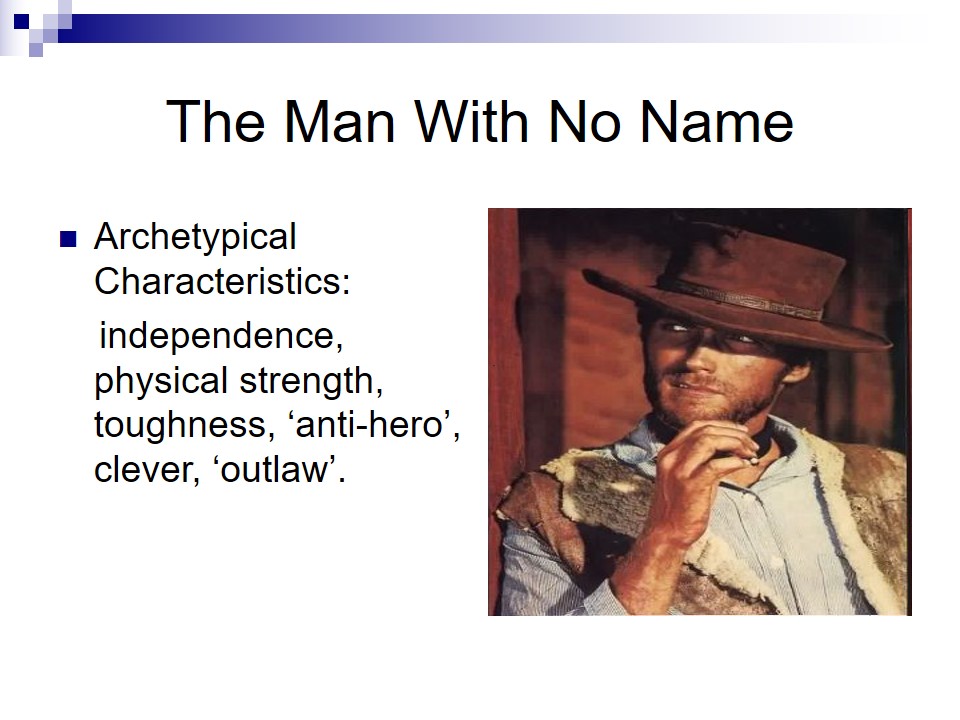
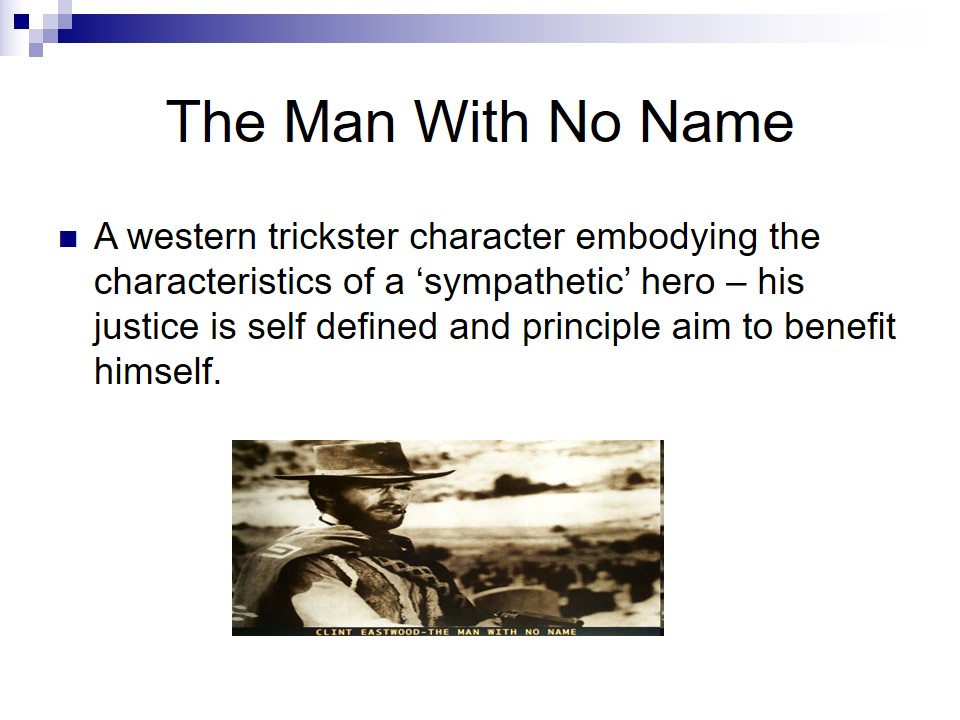
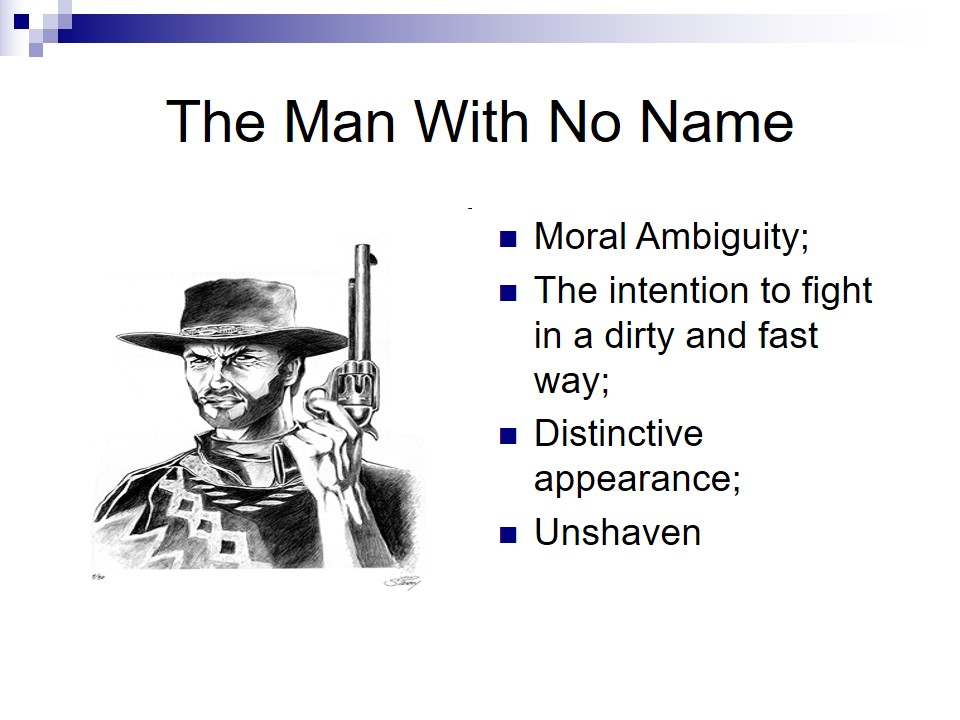
Features of Trickster Myth
The principle features characterizing trickster myth can be expressed through the following:
- Goddess or spiritual nature;
- Break the nature rules;
- Positive effects of cultural tasks performance;
- The elements of culture hero and trickster are combined.
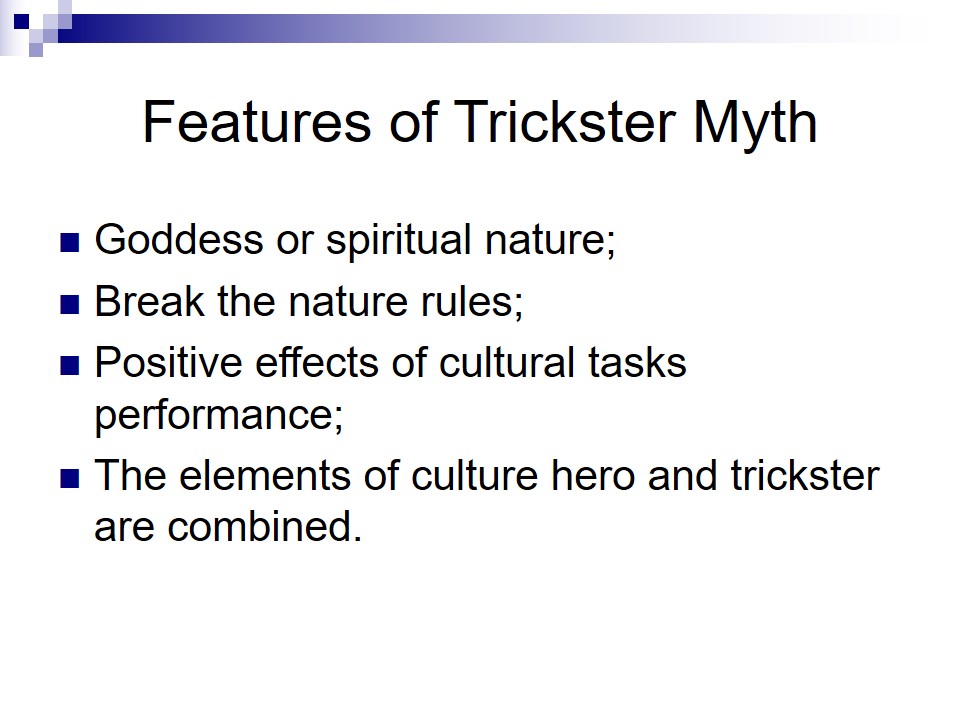
Classical Mythology
Classical mythology was characterized by the following features:
- The reflection of human world;
- Most Associations are related to fire;
- Divine message nature.
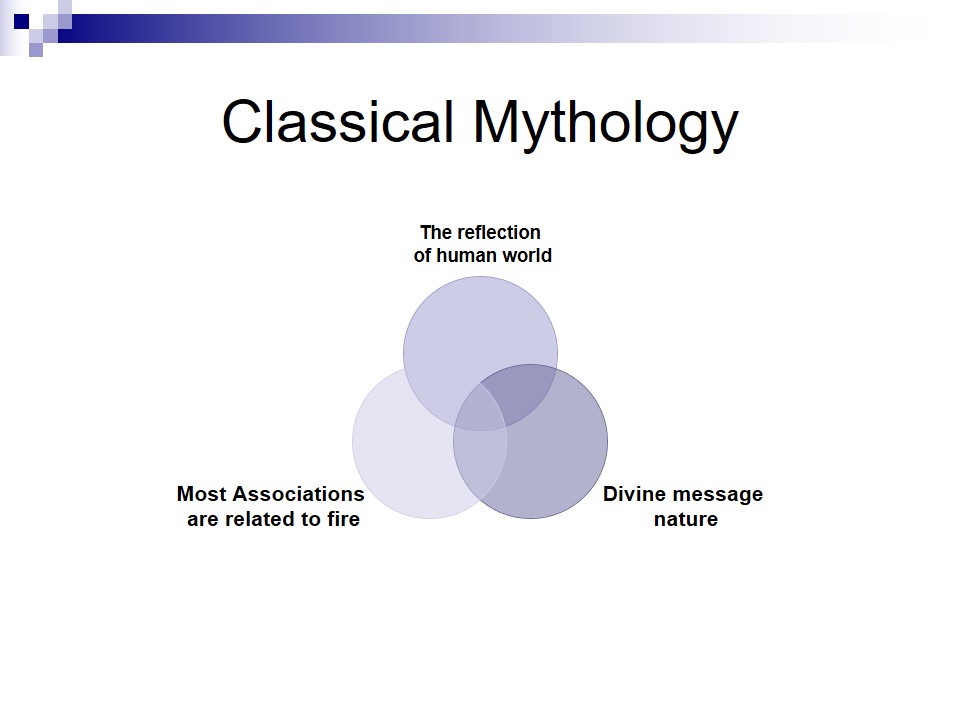
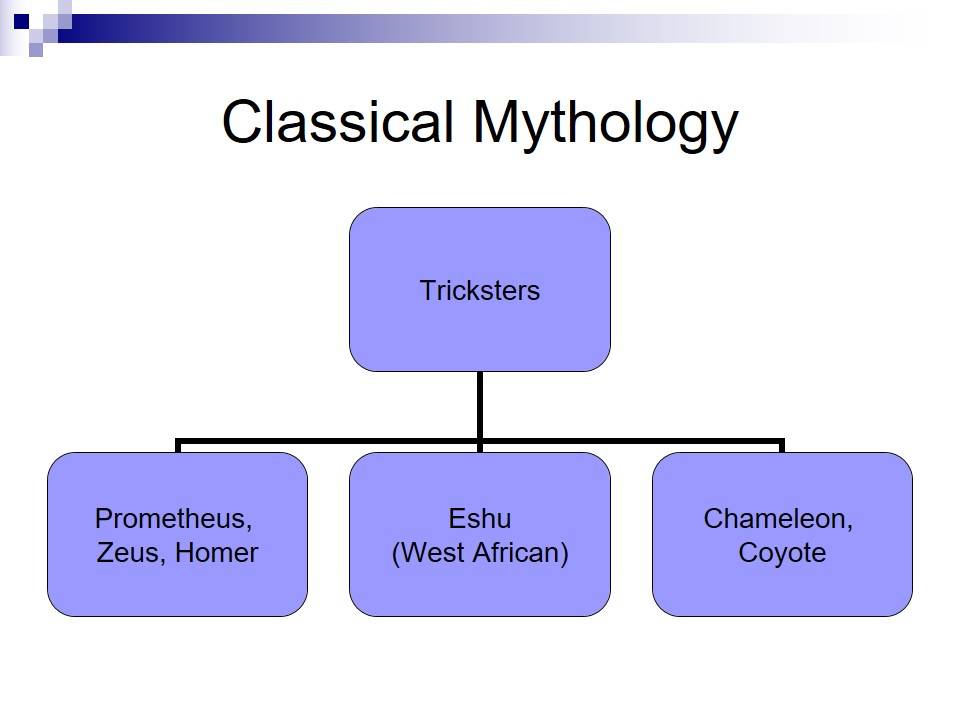
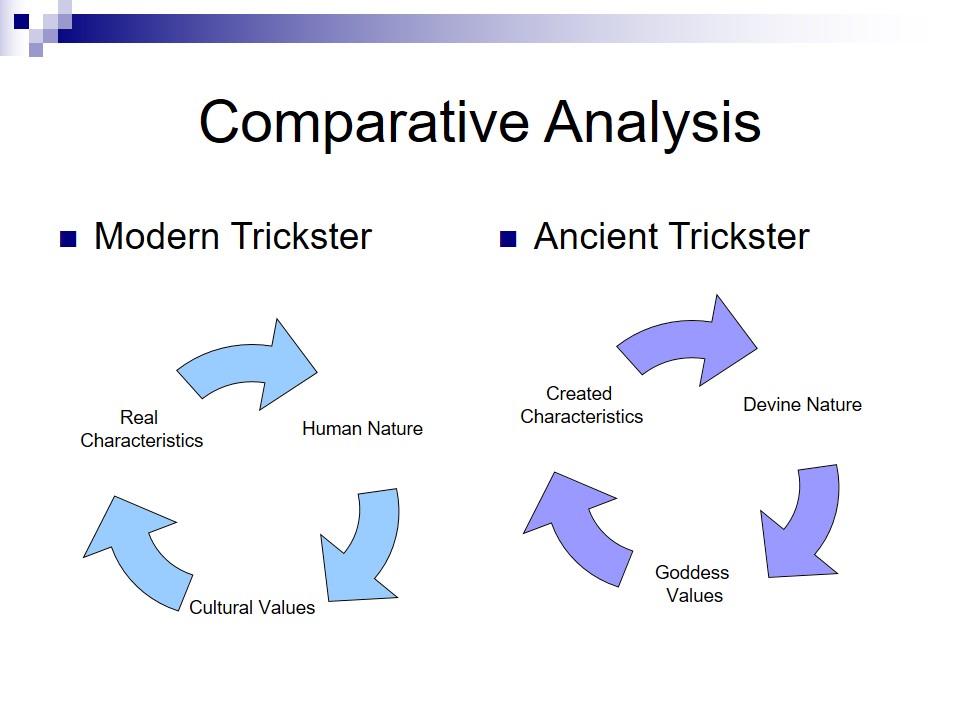
References
Ballinger, F. (2006). Living Sideways: Tricksters in American Indian Oral Traditions.
Reesman, C. (2001). Trickster Lives: Culture and Myth in American Fiction. University of Georgia Press.
Winkler, M. (2001). Classical Myth & Culture in the Cinema. Oxford University Press.